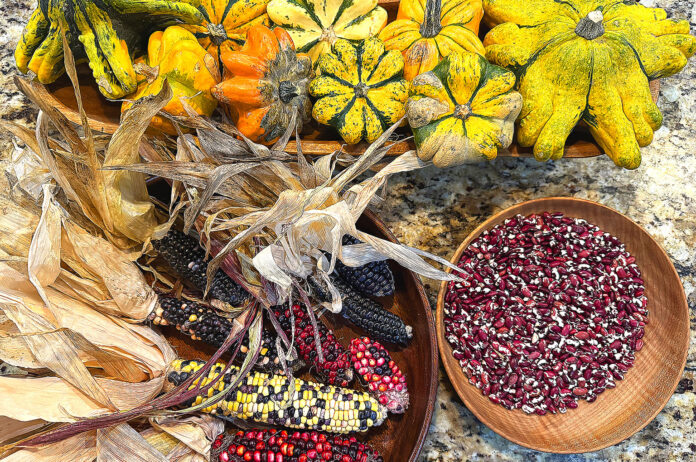
In Oregon and across the country, avian flu has once again disrupted the turkey industry, shrinking flocks to their smallest size in four decades and raising new concerns about food safety. This Thanksgiving, I recommend that we rethink what truly sustains us and look toward the Indigenous food traditions that have nourished this land and its peoples for countless generations.
Indigenous foods offer abundance, but also resilience. For thousands of years, Native American communities thrived on diverse, locally adapted crops such as corn, beans, squash, potatoes, berries, and wild greens, foods that promote health, regenerate soil, and sustain biodiversity. Oregonians who shift their diets toward these traditional foods can strengthen both personal and public health, while reducing our dependence on vulnerable industrial food systems.
Growing and consuming more of these foods will benefit our state’s farmers, too. Oregon’s fall harvest offers an abundance of pumpkins, potatoes, heirloom beans and other legumes, grapes, pears, apples, melons, onions, mushrooms, hazelnuts, and many other staples.
Indigenous and heirloom varieties of these foods, along with grains, greens, nuts, seeds, and herbs, are rich in fiber, polyphenols, and other phytonutrients that support longevity and disease prevention. Fiber and polyphenols are used by gut bacteria to produce hormones such as GLP-1 that naturally control appetite and metabolism, while ensuring proper nutrition for maximum health and longevity.
Consumption of diets rich in fiber is associated with longer life spans, including lower risk of death from cardiovascular, infectious, and respiratory diseases. Fiber consumption is also inversely associated with the risk of type 2 diabetes and cancer of the esophagus, stomach, colon, pancreas, ovary, and breast.
Polyphenols are bioactive compounds that have anti-inflammatory, antioxidant, and neuro-protective activity. The intake of polyphenols has been found to reduce the deleterious effects of aging, a dietary fountain of youth.
I have seen firsthand the harmful impacts of the Standard American Diet on life expectancy and quality of life. But we can reclaim our health by making Indigenous foods our staples. As a Food for Life Instructor, I help people learn to prepare meals of our traditional foods, which can prevent, treat, and even reverse heart disease, type 2 diabetes, and other chronic health problems.
These traditional foods protect public health as well. An autumn increase in avian flu cases is concerning before Thanksgiving. The current outbreak in the Upper Midwest has been responsible for the culling of more than 400,000 turkeys in South Dakota alone. Because avian flu research has been halted, the Centers for Disease Control and Prevention’s reporting of avian flu infections may not be up to date.
Avian flu virus H5N1 has spread across most of the world and has killed about 21 people since 2020. In North America, the virus is also spreading among dairy cows. Research suggests that avian flu virus H9N2 has adapted to human cells. Although cases of person-to-person transmission haven’t been reported, the virus has undergone genetic changes making it more infectious, presenting a risk for the next pandemic. These public health concerns underscore the importance and urgency of restoring our traditional diet.
We can begin by learning to prepare and cook these foods, by growing them in personal and community gardens, and by sharing seeds. Recipes for the holiday season that use Oregon ingredients include Autumn Stew, Mushroom and Hazelnut Loaf, Pumpkin Cranberry Spice Crisp, Pumpkin Spice Muffins, and Three Sisters Stew. The Physicians Committee for Responsible Medicine offers a program of Native American Resources with free recipes.
This way of eating is economical as well. When compared to a Mediterranean diet, a diet of legumes, grains, vegetables, and fruit was found to be 24% less expensive.
This November, let’s celebrate Native American Heritage Month and Thanksgiving by looking to restore our legacy of traditional foods, something for which we can all give thanks.
For receipes, visit tigardlife.com/go/na-recipes.





















